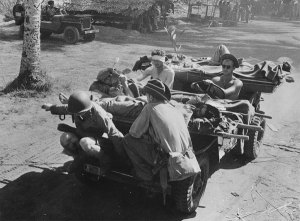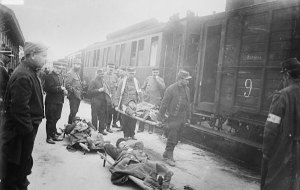Fly flags to honor wounded veterans

Wars throughout the centuries – large or small, won or lost, justified or not – have two things in common: flags and veterans. The flags fly as veterans march away – and back home, many of them injured in mind or body.
A common term for such men and women is “wounded warriors,” a phrase used across the centuries, and they deserve medals, applause and support to restore them to wholeness.

In the 1700s, British poet Christopher Pitt translated Virgil’s “Aeneid” from Latin to English. In Pitt’s version of the story of the legendary founder of Rome, he describes the devastation of a battle: “In the red deluge all the fields lie drown’d;/And cries and agonizing groans resound/Of wounded warriors, lab’ring out their breath.”
A century later, The New York Times reported on the Spanish-American War. Noting that injured men were shipped from Cuba to Florida for treatment, the article called attention to “these wounded warriors returning to their native soil after their glorious achievements in the field.”

In 1914, that newspaper’s coverage of the First World War revealed how passenger cars were pressed into service because there were not enough ambulances to cope with the carnage. A former U.S. ambassador to France even took it upon himself to buy a car in Paris and drive it toward the sound of the guns “to rescue wounded warriors.”
During World War II, a Louisiana newspaper described a hospital for returning veterans under the headline: “America’s Wounded Warriors Given Care in Huge Hospital.”

Each of those scenes contains a subtext: Wounded warriors are often neglected. In the Roman epic, the suffering lay forgotten on the battle field. In the report on the Spanish-American War, the Times disclosed that “the provision [of aid] was entirely inadequate.”
During WWI, the necessity of commandeering private vehicles underscored a failure to treat the suffering swiftly. The account of the hospital in the 1940s reveals the story of an airman in Burma who sustained severe wounds to his skull. Unconscious for two weeks, he was then placed on a ship for a trip home – that took 78 days!
Since 1776, have fluttered for such men and women – and for their successors in Korea, Vietnam and the Middle East. But hearts should flutter for them, too, along with generous donations to organizations that aid heroes, including the VFW, American Legion and Wounded Warrior Project.
